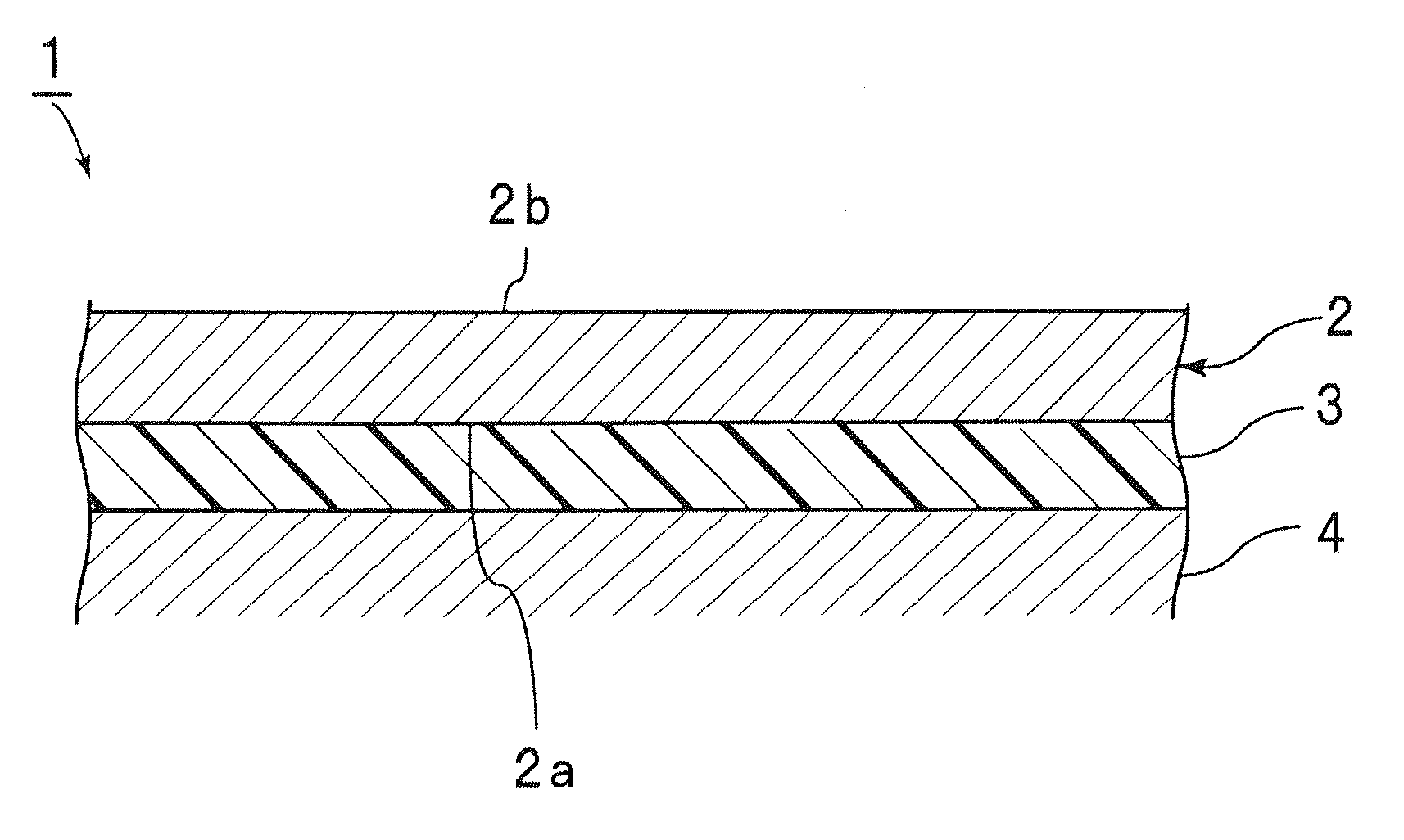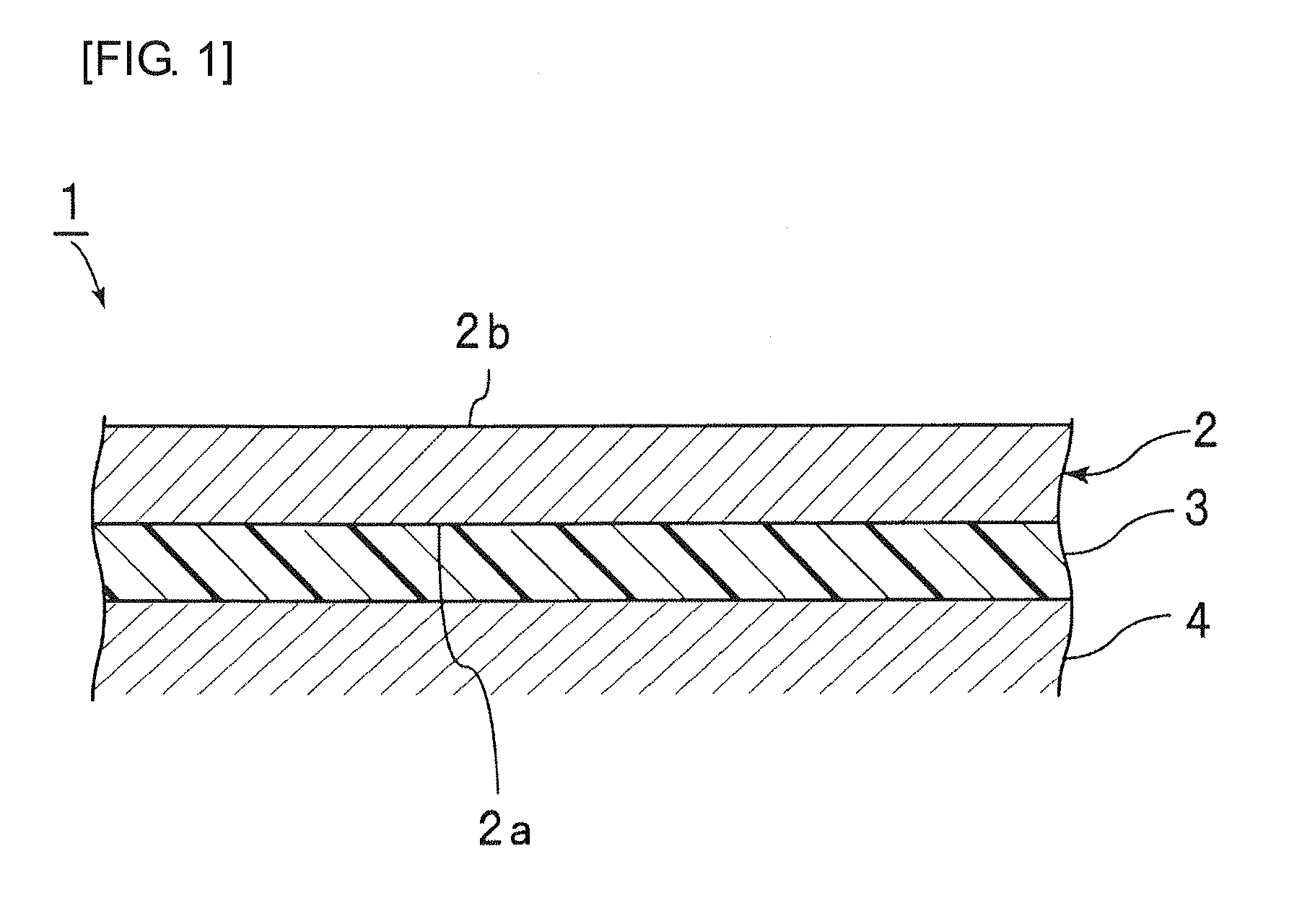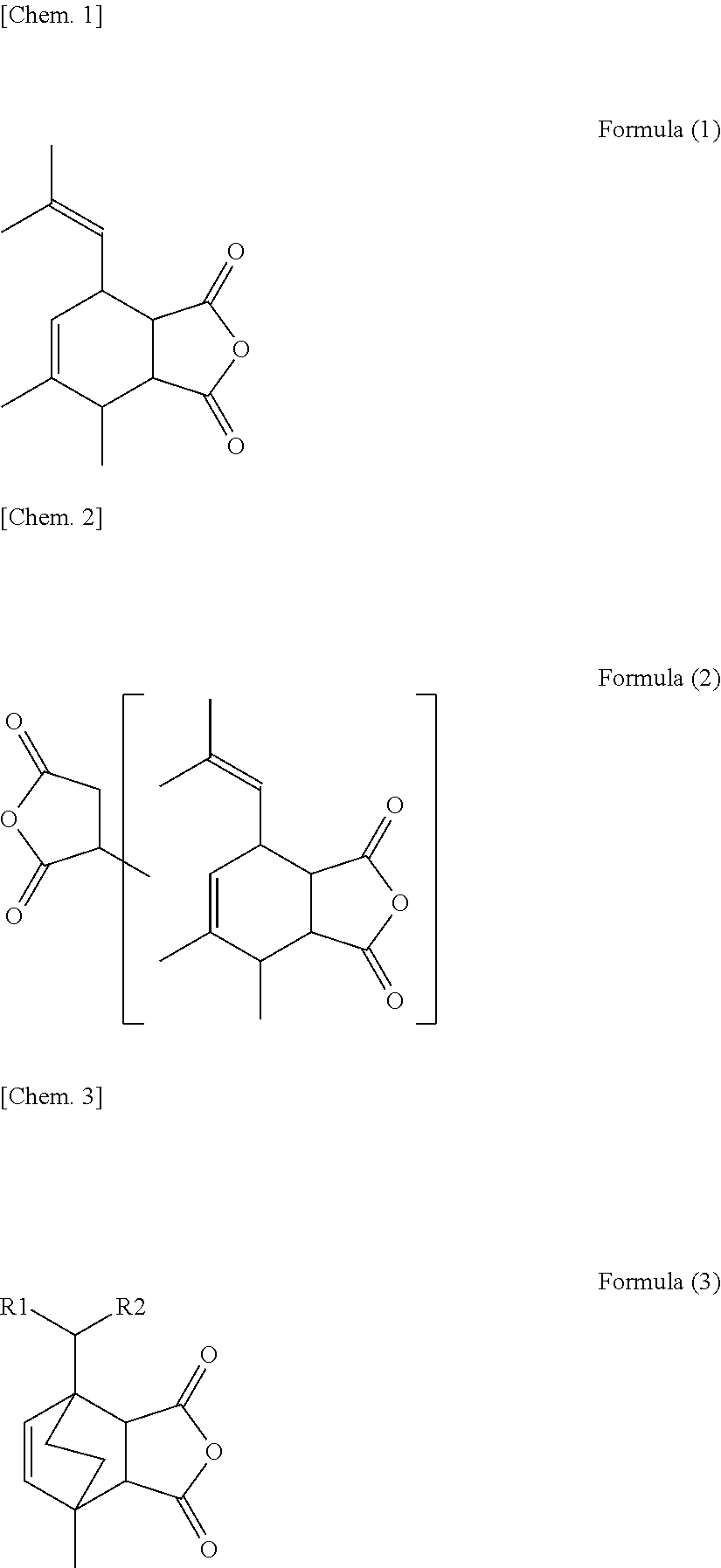Insulating sheet and laminated structure
- Summary
- Abstract
- Description
- Claims
- Application Information
AI Technical Summary
Benefits of technology
Problems solved by technology
Method used
Image
Examples
synthesis example 1
[0184]A flask having a thermometer, a stirrer, a dropping funnel, and a reflux condenser was charged with 0.7 mole of methyl methacrylate and 0.3 mole of glycidyl methacrylate, and then with methyl ethyl ketone as a solvent and azobisisobutyronitrile as a catalyst. The solution was stirred for 18 hours at 80° C. under nitrogen atmosphere. After that, the solution was cooled and methylhydroquinone as a polymerization inhibitor was added to the mixture. An amount of 1 mole of water was added to the solution, and the solution was stirred at 40° C. while 0.1 mole of phosphoric anhydride was gradually added to the solution. Thereafter, reaction was allowed to occur for three hours, and thereby a polymer solution containing phosphate groups was prepared.
[Polymer Other than Polymer (A)]
[0185](1) Epoxy-group containing acrylic resin (product of NOF Corporation, product name: Marproof G-0130S, Mw=9,000, Tg 69° C.)
[0186](1) Bisphenol A liquid epoxy resin (product of Japan ...
example 1
[0231]The materials were blended with one another and kneaded at a ratio (the unit for blending is part(s) by weight) shown in the following Table 1 with a homodisper to prepare an insulating material.
[0232]The prepared insulating material was applied to a 50-μm thick release PET sheet so that the thickness of the insulating material was 100 μm. The applied insulating material was dried for 30 minutes in a 90° C. oven to prepare an insulating sheet on the PET sheet.
PUM
| Property | Measurement | Unit |
|---|---|---|
| Percent by volume | aaaaa | aaaaa |
| Percent by volume | aaaaa | aaaaa |
| Percent by volume | aaaaa | aaaaa |
Abstract
Description
Claims
Application Information
 Login to View More
Login to View More - R&D
- Intellectual Property
- Life Sciences
- Materials
- Tech Scout
- Unparalleled Data Quality
- Higher Quality Content
- 60% Fewer Hallucinations
Browse by: Latest US Patents, China's latest patents, Technical Efficacy Thesaurus, Application Domain, Technology Topic, Popular Technical Reports.
© 2025 PatSnap. All rights reserved.Legal|Privacy policy|Modern Slavery Act Transparency Statement|Sitemap|About US| Contact US: help@patsnap.com



